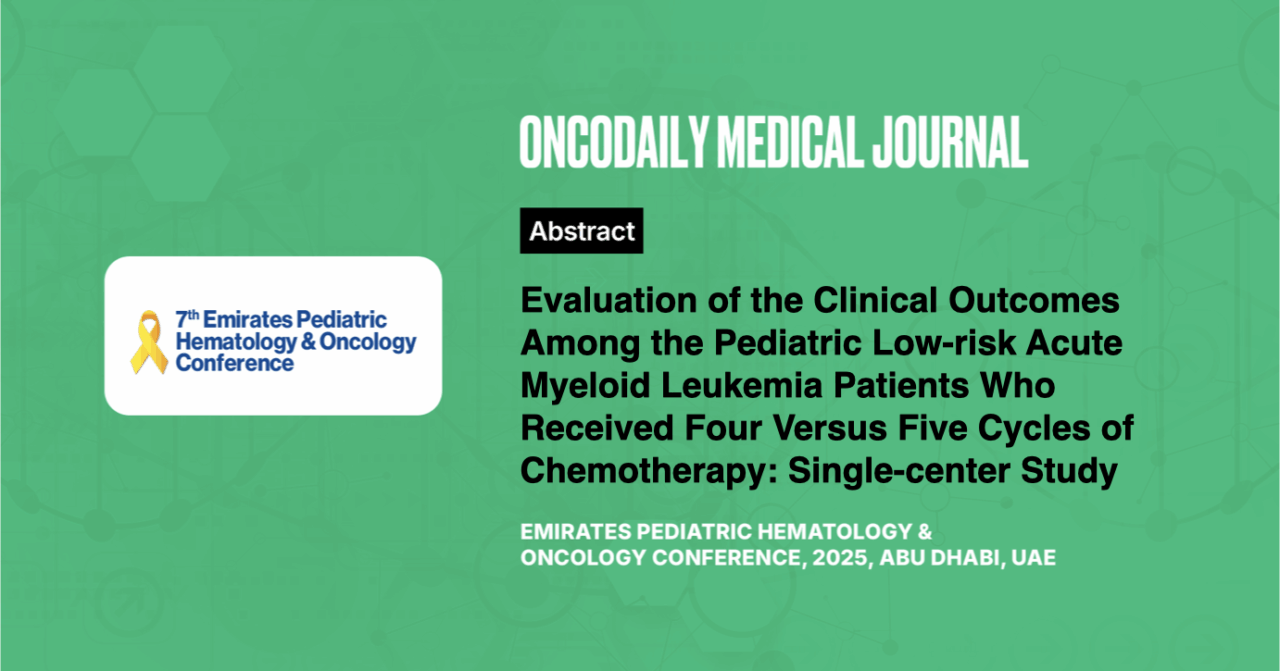Evaluation of the Clinical Outcomes Among the Pediatric Low-risk Acute Myeloid Leukemia Patients Who Received Four Versus Five Cycles of Chemotherapy: Single-center Study
Abstract
Introduction: The Primary objective of this study is to compare the overall survival (OS), event free survival (EFS), and relapse risk (RR) for low risk/intermediate risk (LR/IR) patients receiving four versus five chemotherapy courses as per MRC 15 chemotherapy protocol and to assess the therapy-associated toxicity and complications of therapy in both cohort arms. The secondary objective is to compare the cost and patients’ length of hospital stay in both cohorts, 4 versus 5 cycles of patients.
Methodology: This is a retrospective descriptive study. It includes all patients less than 16 years diagnosed with acute myeloid leukemia, non-high risk, and treated with chemotherapy alone without allogeneic stem cell transplantation at KFSHD, pediatric hematology/oncology department between January 2008 and December 2021. The total number of cohorts is 32 patients. After obtaining the IRB approval, all the data and information were retrieved from the patients’ hard and electronic medical records and then computerized using a Microsoft Excel sheet. Computerized data was exported to (SPSS program updated version 24, IBM Corp., Armonk, NY, USA), which was used for analysis of the data.
Results: A total of 32 patients diagnosed with LR and IR acute myeloid leukemia were included in this study, LR =14 and IR =18 patients. 9 patients received a total of 4 cycles of chemotherapy, vs 23 patients received 5 cycles. Comparison between the two groups showed fewer complications and better overall survival and disease-free survival in the four-cycle group. The OS of the 4-cycle group vs 5 cycles is 100% and 90%, respectively, and the DFS is 100% and 78%, respectively.
Conclusion: Pediatric AML is a rare, heterogeneous disease with current survival rates around 70% despite all the advances in intensification of chemotherapy regimens and supportive care. International collaborative clinical trials should focus closely on understanding the molecular landscape and the biology and genetic background of AML to discover effective target therapies and immunotherapeutic agents, particularly when intensifying the currently used conventional chemotherapies may not be possible without significant treatment-related toxicities.
Clinicians face challenges optimizing the ongoing therapeutic options that will provide maximum effectiveness with fewer toxicities. This study showed non-inferiority in survival parameters when giving four courses rather than five courses of chemotherapy in treating LR patients, especially for those who obtained negative MRD after the first cycle of induction, with notably lower infection rates and serious toxic effects of chemotherapy.





